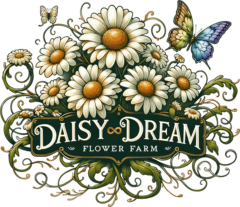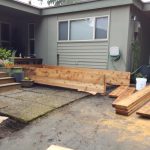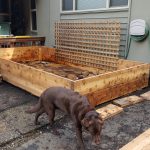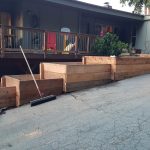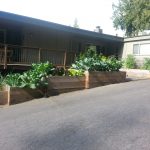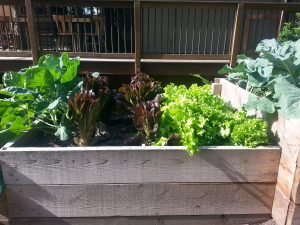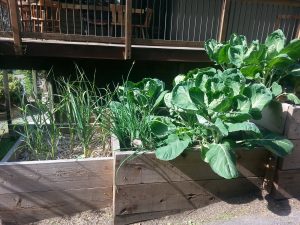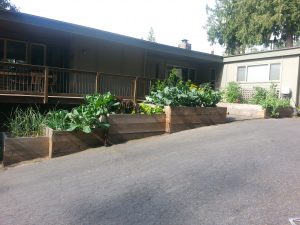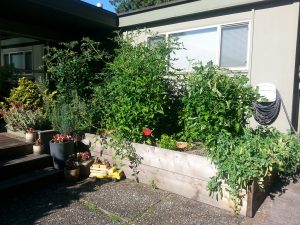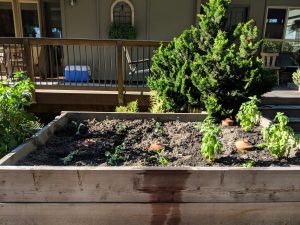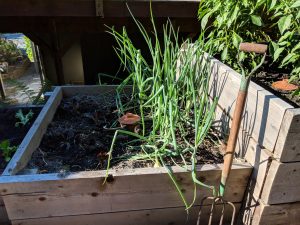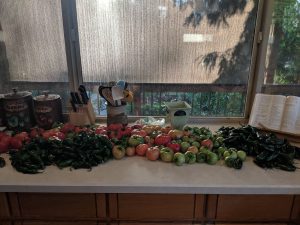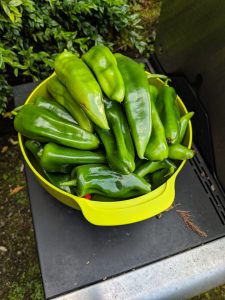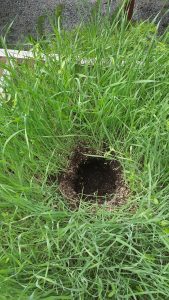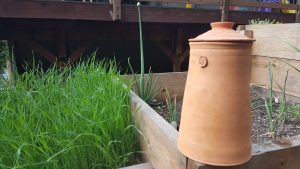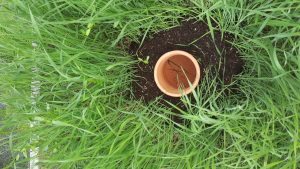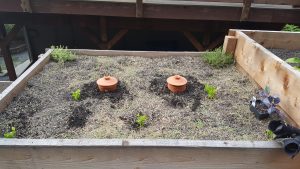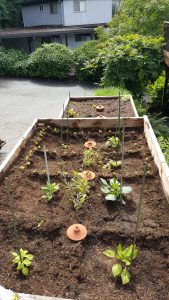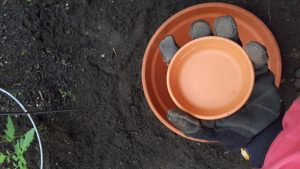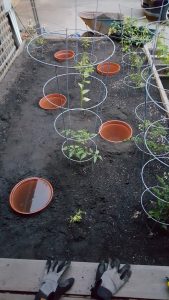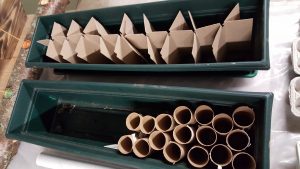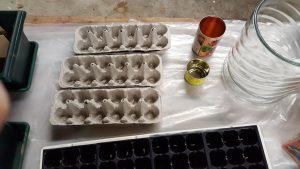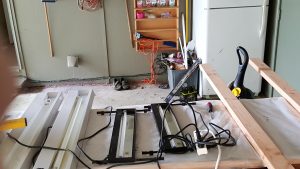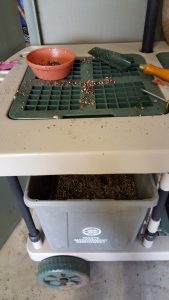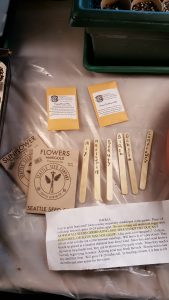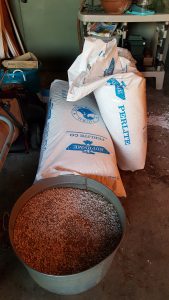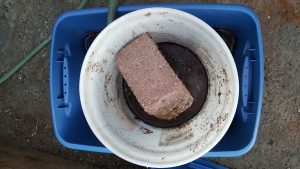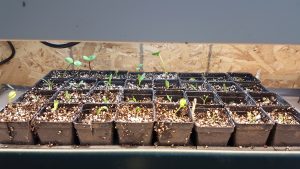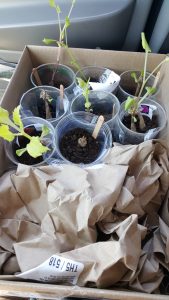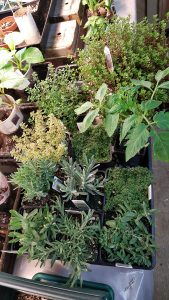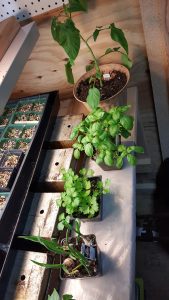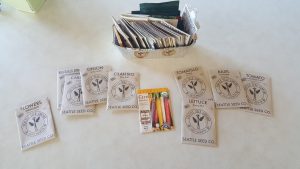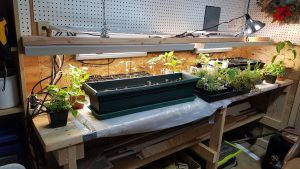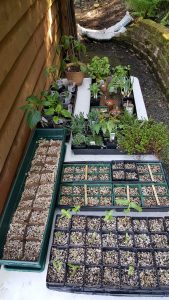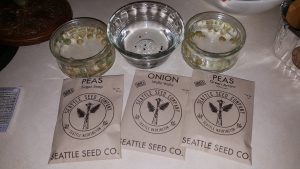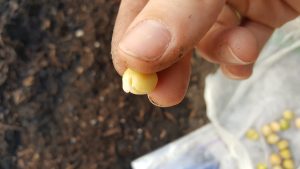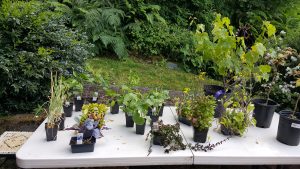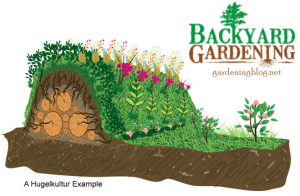Since we have been stuck at home this spring I have done a few projects around the yard to keep busy. Once my seeds were starts I planted them and got busy with the rest of the yard.
After building the garden beds I thought a bed for flowers would compliment the garden well. My in-laws left a huge pile of stones from a flower garden they used to have. I have been trying to think of a use for them and now I had one. I layered them two stones high and against the fence behind the garden beds. I put plastic against the fence to block the moisture. I had some trellises that I bought years ago and now I finally have a use for them. I planted clematis, sunflowers, marigolds, dahlias, and a few others.
The next bed I made was for herbs. Same style as the flower bed in a different part of the yard. I planted rosemary, thyme, sage, oregano, parsley, cilantro, and basil. The herbs are growing like crazy.
I still had some stones leftover so I thought I would build up a bed to go around my blueberries. There was one established bush, and I had brought three others in pots from our last house. So I built the bed and planted the blueberry bushes, they are thriving now that they have been planted.
Another project in the backyard was planting some new grass. Back in 2016 I had helped my in-laws by digging up a flower bed they no longer wanted. I think they were going to extend the patio. When we bought the house we thought to do the same thing. But we decided to just extend the grass, a cheaper and faster result. It has filled in nicely.
My favorite project was one my husband did. He put in a drip irrigation system for all my beds. Oh it is so nice to just turn on the water and they get fed in just the right spot!
For the front yard just some fresh bark and a few ground cover plants is all it needed. Our yard has never looked so good.
